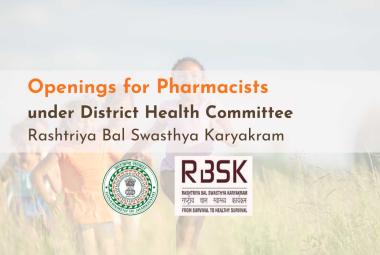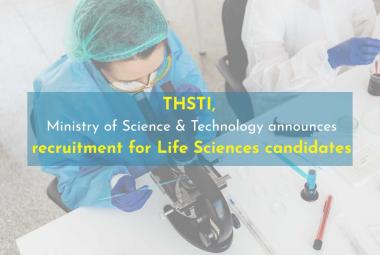 ABOUT AUTHOR
ABOUT AUTHOR
Sonia Zaman
Department of Pharmacy,
Southeast University, Banani, Dhaka, Bangladesh
sonia_6995@yahoo.com
ABSTRACT
Garuga pinnata (family: Burseraceae) has many traditional medicinal uses including as astringent, bronchodilator, stomachic, expectorant, pulmonary infection, antidiabetic etc. The present study is based on this plant to evaluate the antimicrobial, antioxidant and cytotoxic properties of G. pinnata leaves. Antimicrobial activity of chloroform extract was evaluated against four Gram positive bacteria Bacillus megaterium, Bacillus subtilis, Sarcina lutea, Staphylococcus aureus and five Gram negative bacteria Escherichia coli, Pseudomonas aeruginosa, Salmonella paratyphi, Shigella dysentriae, Vibrio mimicus, and two common fungus Aspergillus niger, Candida albicans by applying disc diffusion method where Kanamycin disc (30 µg/disc) was used as reference standard. The chloroform extract of G. pinnata leaves showed very good antimicrobial activity against both gram positive and gram negative bacteria and fungus A. niger. The most susceptible microorganism was S. paratyphi (19 mm zone of inhibition) followed by B. subtilis (15 mm zone of inhibition). The antioxidant activity of chloroform extract of G. pinnata leaves was evaluated spectrophotometrically using 1,1-diphenyl-2-picrylhydrazyl (DPPH) for radical scavenging and ascorbic acid was used as standard. The extract exhibited strong DPPH radical scavenging activity with IC50 value of 57.06 µg/ml as compared to the IC50 value of the reference standard, ascorbic acid (37.21 µg/ml). The cytotoxic activity of G. pinnata was determined by brine shrimp lethality bioassay using vincristine sulfate as standard. The chloroform extract revealed significant cytotoxic activity with LC50 of 6.607 µg/ml whereas LC50 of Vincristine sulphate was 6.026 µg/ml.
[adsense:336x280:8701650588]
REFERENCE ID: PHARMATUTOR-ART-2415
INTRODUCTION
G. pinnatais a deciduous tree species from the family Burseraceae. It occurs in Asia, namely the Indian sub-continent, Southeast Asia and parts of China.[1] In Bangladesh Garuga pinnata is found in forests of Chittagong, Chittagong hill tracts, Cox’s Bazar, Habiganj, Moulvi Bazar, Dhaka, Tangail. It has many local names Ghogar, Nilbhadi, Jeolbhadi, Dabdubi, Joom, Pahari Jiga, Silbhadi, Katrang bhadi, Kharapata, Kapila, Lalmila, Engla, Hengela etc. It’s a medium-sized to large deciduous tree. Leaves imparipinnate 15-45cm long, leaflets 13-21, up to 15 cm long, lanceolate or ovate-lanceolate, acuminate, oblique, crenate. Flowers small, yellow, in much branched axillary tomentose panicles, several together at the ends of the branches. Drupes black, fleshy, size of a gooseberry, edible.
Leaves contain amentoflavone. Stem bark extract gave positive tests for steroids, terpenes, alkaloids, flavonoids and saponins. An euphane triterpene alcohol has been isolated from this plant.[2] Two diarylheptanoids, 6'-Hydroxygaruganin and Garuganin were isolated from G. pinnata.[3][4][5] Pheophorbide-α and-β methyl esters which are isolated from methanol crude extracts of this plant are reported paramount cytotoxic activity against KB and its drug resistant human cancer cell lines. [12] Garuganins I and II compounds isolated stem bark hot petrol and methanol extracts exhibits analogous mechanisms of antibacterial action. [13][14]
G. pinnataleaf juice is astringent, given with honey in asthma. Decoction of the root is given for the treatment of pulmonary infections. [6]The fruits are stomachic and expectorant, given in diarrhea whereas, the stem juice is commonly used as eye drops to cure opacities of the conjunctiva. [7] [8] The stem bark of this plant in the combination of pepper is used to treat the diabetes. [9]Oxidative stress plays an important role in chronic complications of diabetes mellitus. A current study reveals the efficacy of G. pinnata aqueous bark extract in the amelioration of diabetes, which may be attributed to its antioxidant potential. [10] It has been also evidently proved that methanol extract of this plant is also much potent to scavenge free radicals generated in vitro. [11] Methanol extract of stem bark also reported prominent anticancer activities on human breast cancer cell lines such as MCF-7 and MDA-MB 231. [13] Methanol and aqueous extracts of stem bark observed with high in vitro α- amylases and α- glucosidase inhibition and also notably reduced serum glucose levels in vivo in streptozotocin induced diabetic rats proving its anti-diabetic activities. [15] Methanol and aqueous extracts of G. pinnata stem bark is noticed to associate with high in vitro and in vivo anti-inflammatory activity by significant inhibition of protein denaturation and Carrageenan-induced rat paw edema. [16] In contrast to the above mentioned medicinal properties of this plant, the current investigation was carried out to evaluate antioxidant, antimicrobial and cytotoxic activities of chloroform extract of G. pinnata leaves.
MATERIALS AND METHODS
Drugs and chemicals
DPPH (1, 1-diphenyl-2-picryl hydrazyl) was obtained from Sigma Aldrich USA. Ascorbic acid was obtained from SD Fine Chem. Ltd, Biosar, India. DMSO (dimethylsulfoxide) was purchased from Merck, Germany. Kanamycin was collected from Square Pharmaceuticals Ltd., Bangladesh. Vincristine sulfate was collected from Alfa Asear Ltd. USA.
Collection and identification of the plant
G. pinnata leaves were collected from Dhaka, Bangladesh in December 2013 and a voucher specimen for this collection has been maintained in Bangladesh National Herbarium, Dhaka, Bangladesh.
Extraction of the plant material
The collected leaves were sun dried for seven days. The dried leaves were ground into fine powder by a grinder machine. Then 300 gm of powder of G. pinnata was extracted by cold extraction using chloroform (1000 ml) with daily shaking and stirring for 10 days at room temperature. After 10 days the extract was filtered through cotton followed by filter paper (Double filter paper 102, 11.0 cm). Then the concentrated liquid extract was dried at room temperature (37°C) to obtain a greenish mass. The weight of the crude extract obtained from leaves was 20 grams.
Microbial strains and culture media
Antimicrobial activity was carried out against four Gram positive bacteria Bacillus megaterium, Bacillus subtilis, Sarcina lutea, Staphylococcus aureus and five Gram negative bacteria Escherichia coli, Pseudomonas aeruginosa, Salmonella paratyphi, Shigella dysentriae, Vibrio mimicus, and two Fungus Aspergillus niger, Candida albicans. These bacteria were chosen to be studied as they are important pathogens and also due to rapidly developed antibiotic resistance. The microorganisms were collected as pure cultures from the Institute of Nutrition and Food Science (INFS), University of Dhaka, Bangladesh. For bacteria, the culture media was prepared by nutrient agar, reconstituting with distilled water according to specification (2.8 % w/v).
Antibacterial and antifungal screening by disc diffusion method
Antibacterial and antifungal activity of G. pinnatawas carried out by the standard disc diffusion method. [17]Solution of known concentration (500 μg/disc) of the test sample was made by dissolving measured amount of the sample (50 mg) in 1 ml of methanol. Then sterile filter paper disc (5 mm diameters) was impregnated with known test substance and dried. The dried disc was placed on plates (Petri dishes, 120 mm diameter) containing a suitable medium (nutrient agar) seeded with the test organisms. Standard disc of kanamycin (30 μg/disc) and blank discs (impregnated with solvents followed by evaporation) were used as positive and negative control. These plates were kept at low temperature (4º C) for 24 hours to allow maximum diffusion. The plates were then kept in an incubator (37º C) for 24 hours to allow the growth of microorganisms. Antibacterial activity of the test sample was observed by growth inhibition of organisms forming clear, distinct zone surrounding the discs. The antibacterial activity was expressed in terms of millimeter by measuring the diameter of the zone of inhibition. The greater zone of inhibition indicates the greater activity of the test material against the test organism.
Antioxidant activity by DPPH radical scavenging activity
The free radical scavenging activity (antioxidant capacity) of the leaves extract on the stable radical 1,1-diphenyl-2- picrylhydrazyl (DPPH) was determined by the method of Brand-Williams. [18][19][20] During this experiment the extract of G. pinnata at different concentrations were mixed with 3.0 ml of DPPH methanol solution. The antioxidant potentiality was assayed from the bleaching of purple colored methanol solution of DPPH radical by the plant extracts by UV- spectrophotometer (Model NO. 1501PC Shimadzu, Japan) at 517 nm. Ascorbic acid was used as a positive control. Percent scavenging of the DPPH free radical was measured using the following equation-
% DPPH radical scavenging = [1 – (As/Ac)] × 100
Here, Ac = absorbance of control, As = absorbance of sample solution.
Then % inhibitions were plotted against respective concentrations used and from the graph IC50 was calculated. The lower IC50indicates higher radical scavenging activity and vice versa.
Cytotoxicity screening by brine shrimp lethality bioassay
The brine shrimp lethality bioassay was used to evaluate the cytotoxic activityof G. pinnata leaves extract. [21] Brine shrimp lethality bioassay is the assay procedure of bioactive compounds, which indicates cytotoxicity as well as a wide range of pharmacological activities (e.g. anticancer, antiviral, insecticidal, pesticidal, AIDS, etc.) of the compounds. [22] This method detect the lethality of crude extracts on Artemia salina, used as a convenient monitor for the screening.The eggs of brine shrimp (A. salina) were hatched in a tank in artificial seawater (3.8 % NaCl solution) at a temperature around 370 C with constant air oxygen supply. Two days were allowed to hatch and mature the nauplii.For the experiment, the samples (extracts) are prepared by dissolving the extracts in dimethylsulfoxide (DMSO) not more than 50 μl in 5 ml solution and solutions of varying concentrations (20, 40, 60, 80 and 100 µg/ ml) were prepared by theserial dilution process using simulated seawater. Avial containing 50 μl DMSO diluted to 5ml was used as a control. Then 10 live matured brine shrimp nauplii were added to each of the experimental vials and control vial. Each test tube contained about 5 ml of seawater and 10 shrimp nauplii. After 24 h, the vials were inspected using a magnifying glass and the number of survived nauplii in each vial was counted. Vincristine sulfate was used as positive control. The rate of mortality of nauplii was found to be increased in concentration of each of the samples. From this data, the percent (%) of lethality of the brine shrimp nauplii was calculated for each concentration and control.
[adsense:468x15:2204050025]
RESULTS
Antibacterial and antifungal activity
The chloroform extract of G. pinnata was subjected against gram positive, Gram negative bacteria and fungus. Most bacteria were sensitive to the extract as shown in (Table 1). In case of gram positive bacteria the extract showed good antibacterial activity against B. subtilis and S. aureus with 15 mm and 13 mm zone of inhibition respectively. This extract showed moderate activity against B. megaterium and S. lutea with zone of inhibition 8 mm and 9 mm respectively. In case of gram negative bacteria the extract showed good activity against S. paratyphi andE. coli with zone of inhibition 19 mm and 11 mm respectively. Activity against gram negative S. dysenteriae was moderate (9 mm). But the extract had no microbial activity against gram negative V. mimicus P. aeruginosa. In the fungus group A. niger had zone of inhibition 12 mm and C. albicans was not susceptible to the extract tested on.
Antioxidant activity
The antioxidant activity of G. pinnata was determined spectrophotometrically using DPPH and ascorbic acid as standard. % of inhibition was calculated using the previously mentioned formula. Then % of inhibitions were plotted against respective concentrations used and from the graph IC50 was calculated (Figure 1). The extract showed significant antioxidant activity with IC50 of 57.06 µg/ml as compared to IC50 of ascorbic acid (37.21 µg/ml).
Cytotoxic Activity
The lethality of the extract of G. pinnata to brine shrimp was determined using vincristine sulfate as standard and the results (% mortality at different concentrations and LC50 values) were shown in (Figure 2). An approximate linear correlation was observed when logarithm of concentration versus percentage of mortality was plotted on the graph paper and the values of LC50 were calculated using Microsoft Excel 2007. [23] The extract showed very good cytotoxic activity with LC50 value 6.607 μg/ml as compared to the activity of standard (LC50 value 6.025 μg/ml).
DISCUSSION
Plants have an almost limitless ability to synthesize aromatic substances, most of which are phenols or their oxygen substituted derivatives. [24] Most are secondary metabolites, of which at least 12,000 have been isolated, a number estimated to be less than 10% of the total. [25] In many cases, these substances serve as plant defense mechanisms against predation by microorganisms, insects, and herbivores. Some such phytochemicals include terpenoids and essential Oils, quinones and tannins, flavones, flavonoids, and flavonols, coumarins, alkaloids, lectins and polypeptides and others.
The presence of as flavonoids, alkaloids and tannins [2] confirm its activity as antimicrobials. So, antimicrobial activity of the studied plant G. pinnata is probably due to the ability of i) flavones to complex with extracellular and soluble proteins and to complex with bacterial cell walls, more lipophilic flavonoids may also disrupt microbial membranes [26], ii) tannins to inactivate microbial adhesins, enzymes, cell envelope transport proteins [27] .
Bioactive compounds are almost always toxic in high doses. Here, in vivo lethality in a simple zoological organism (Brine Shrimp nauplii) is used as a convenient monitor for screening and fractionation in the discovery of new bioactive natural products. In this assay, the extracts showed positive results indicating that the compounds are biologically active.
The leaves of this plant are found to be having noticeable amount of phenolic compounds, which may involve in controlling various oxidative and reductive processes. The evaluation of antibacterial, antioxidant and cytotoxic activities of G. pinnata would play a significant role for the findings of more chemical entities and their bioactivities.
CONCLUSION
G. pinnata is a potential source of many chemical constituents and widely used for many health problems. This plant also provides many pharmacological properties that have been reported previously and few are yet to be investigated. The results obtained in our present study indicated that the crude chloroform extracts of G. pinnata has got profound antimicrobial, antioxidant and cytotoxic effect and may have potential use in medicine. This novel finding will aid us to conduct pharmacological studies to understand the underlying possible mechanisms of the observed activities as well as bioactivity guided isolation and characterization of leading compounds in due course.
Table 1: Antibacterial Screening of G. pinnata
|
Groups |
Name of Bacteria |
Zone of inhibition in mm of G. pinnata (500 µg/disc) |
Kanamycin (30µg/disc) |
|
Gram positive bacteria |
B. subtilis |
15 |
27 |
|
B. megaterium |
8 |
28 |
|
|
S. aureus |
13 |
28 |
|
|
S. lutea |
9 |
26 |
|
|
|
|
|
|
|
Gram negative bacteria |
S. paratyphi |
19 |
27 |
|
V. mimicus |
- |
28 |
|
|
S. dysenteriae |
9 |
26 |
|
|
E. coli |
11 |
25 |
|
|
P. aeruginosa |
- |
29 |
|
|
|
|
|
|
|
Fungus |
A. niger |
12 |
- |
|
C. albicans |
- |
- |
|
|
|
|
|
|

Figure 1: Determination of IC50 values for standard and leaves extract of G. pinnata from linear correlation between of concentration versus percentage of scavenging of DPPH.

Figure 2: Determination of LC50 values for standard and extract of G. pinnata from linear correlation between logarithms of concentration versus percentage of mortality.
ACKNOWLEDGEMENT: The authors wish to acknowledge the phytochemical research laboratory of Southeast University of Bangladesh and Bangladesh National Herbarium, Dhaka, Bangladesh.
REFERENCES
1. Singh S. and Singh K. P.; Description of two new species of Psyllaephagus Ashmead (Hymenoptera: Encyrtidae) parasitizing Phacopteron lentiginosum Buckton (Hemiptera: Psyllidae), a leaf gall-former of Garuga pinnata Roxburgh (Burseraceae); Zootaxa; 2011; 2885(1); 33–43
2. Ghani A.; Medicinal Plants of Bangladesh with chemical constituents and uses. 2nd edition; Asiatic Society of Bangladesh, Dhaka, Bangladesh; 2003
3. Ara K., Rahman A.H.M.M., Hasan C.M., Iskander M.N., Asakawa Y., Quang D.N. and Rashid, M.A.; Macrocyclic diarylheptanoids from Garuga pinnata; Phytochemistry; 2006; 67(24); 2659-2662
4. Ara K., Kaisar M.A., Rahman M.S., Chowdhury S.R., Islam F. and Rashid M.A.; Antimicrobial Constituents from Garuga pinnata Roxb; Lat. Am. J. Pharm; 2012; 31(7); 1071-1073
5. Rashid M. A., Haque M. R., Sikder M. A. A., Chowdhury A. A., Rahman M. S. and Hasan C. M.; Review on Chemistry and Bioactivities of Secondary Metabolites from Some Medicinal Plants and Microbes of Bangladesh; Bangladesh Pharmaceutical Journal; 2014; 17(1); 63-79
6. Yusuf M., Chowdhury J.U., Wahab M.A. and Begum J.; Medicinal Plants of Bangladesh; BCSIR, Dhaka, Bangladesh; 1999; 223
7. Kathad H.K., Shah R.M., Sheth N.R. and Patel K.N.; In Vitro Antioxidant Activity of Leaves of Garuga pinnata Roxb; Int. J Pharm Res; 2010; 2(3); 9-13
8. Rahman M. S., Begum B., Chowdhury R., Rahman K. M. and Rashid M. A.; Preliminary Cytotoxicity Screening of Some Medicinal Plants of Bangladesh; Dhaka Univ. J. Pharm. Sci.; 2008;7(1); 47-52
9. Jain S. K., Sinha B. K. and Gupta R. C.; Notable plants in ethnomedicine of India; Deep Publications New Delhi; 1991; 211-213
10. Shirwaikara A., Rajendrana K. and Barika R.; Effect of Garuga pinnata Roxb Aqueous Bark Extract on Tissue Antioxidant Activity in Streptozotocin-Nicotinamide–Induced Type II Diabetic Rats; Pharmaceutical Biology; 2007; 45(3); 205-209
11. Thupurani M. K., Reddy P. N., Thirupathaiah A., Charya M. A. S. and Shiva D.; In vitro determination of antioxidant activities of Garuga pinnata Roxb; International journal of medicinal and aromatic plants; 2012; 2(4); 566-572
12. Wongsinkongman P., Brossi A., Wang H. K., Bastow K.F. and Lee K.H.; Antitumor agents Part 209: Pheophorbide-a derivatives as photo-independent cytotoxic agents; Bioorganic & Medicinal Chemistry; 2002; 10(3); 583-591
13. Thupurani M. K., Reddy P. N., Mathi P. and Charya M. A. S.; Studies On Anticancer And Antibacterial Potentialities Of Garuga Pinnata Roxb; International Journal of Pharmaceutical Research and Review; 2013; 21(2); 163-167
14. Keseru G. M. and Nogradi M.; Prediction of antibacterial activity of some diarylheptanoids isolated from garuga species by molecular mechanics and molecular orbital caluculations; Journal of Molecular Structure:Theochem; 1993; 286; 259-265
15. Thupurani M. K., Reddy P. N. and Charya M. A. S.; In vitro and in vivo antidiabetic potentialities of Garuga pinnata ROXB stem bark; International Journal of Pharmacy & Therapeutics; 2013; 4(4); 255-260
16. Thupurani M. K., Reddy P. N., Charya M. A. S. and Mittapelli G.; In Vitro and In Vivo Determination of Anti-Inflammatory Activities of Garuga pinnata Roxb; Int. J. Pharm. Sci. Rev. Res.; 2013; 22(2); 310-314
17. Bauer A.W., Kirby W. M. M., Sherries J. C. and Turck M.; Antibiotic susceptibility testing by a standardized single disc method; American Journal of Clinical Pathology; 1966; 45(4); 493-496
18. Brand-Williams W., Cuvelier M. E. and Berset C.; Use of free radical method to evaluate antioxidant activity; Lebensmittel Wissenschaft und Technologie; 1995; 28(1); 25-30
19. Aher A. N., Pal S. C., Yadav S. K., Patil U. K. and Bhattacharya S.; Antioxidant activity of isolated phytoconstituents from Casuarina equisetifolia Frost (Casuarinaceae); J. Plant Sci.; 2009; 4(1); 15-20
20. Yang E., Ham Y. M. and Hyun C.; Anti-inflammatory effects of apo-9′-fucoxanthinone from the brown alga, Sargassum muticum; DARU Journal of Pharmaceutical Sciences; 2013; 21(1); 62
21. Meyer B. N., Ferrigni N.R., Putnam J.E., Jacobsen L.B., Nichols D.E. and McLaughlin J.L.; Brine shrimp: A convenient general bioassay for active plant constituents; Planta Medica; 1982; 45(5), 31–34
22. Al-Bari M. A., Chowdhury M. K. B., Hossen M. F., Hossain M. M., Zakaria C. M. and Islam M. A. U.; Novel Nickel Cyclam Complexes with Potent Antimicrobial and Cytotoxic Properties; J Appl Sci Res.; 2007; 3(11); 1251-1261
23. Persoone G., Sorgeloos P., Roels O. and Jaspers E.; Proceedings of the international symposium on the brine shrimp Artemia salina, Corpus Christi, Texas, USA; Belgium: Universa Press; 1979
24. Geissman T. A.; Flavonoid compounds, tannins, lignins and related compounds; M. Florkin and E. H. Stotz (ed.), Pyrrole pigments, isoprenoid compounds and phenolic plant constituents, Elsevier, New York, N. Y.; 1963; 9; 265
25. Schultes R. E.; The kingdom of plants; W. A. R. Thomson (ed.), Medicines from the Earth, McGraw-Hill Book Co., New York, N. Y.; 1978; 208
26. Tsuchiya H., Sato M., Miyazaki T., Fujiwara S., Tanigaki S., Ohyama M., Tanaka T. and Iinuma M.; Comparative study on the antibacterial activity of phytochemical flavanones against methicillin-resistant S. aureus; J. Ethnopharmacol; 1996; 50(1); 27–34
27. Ya C., Gaffney S. H., Lilley T. H. and Haslam E.; Carbohydrate polyphenol complexation; R. W. Hemingway and J. J. Karchesy(ed.), Chemistry and significance of condensed tannins, Plenum Press, New York; 1988; 553
NOW YOU CAN ALSO PUBLISH YOUR ARTICLE ONLINE.
SUBMIT YOUR ARTICLE/PROJECT AT editor-in-chief@pharmatutor.org
Subscribe to Pharmatutor Alerts by Email
FIND OUT MORE ARTICLES AT OUR DATABASE









